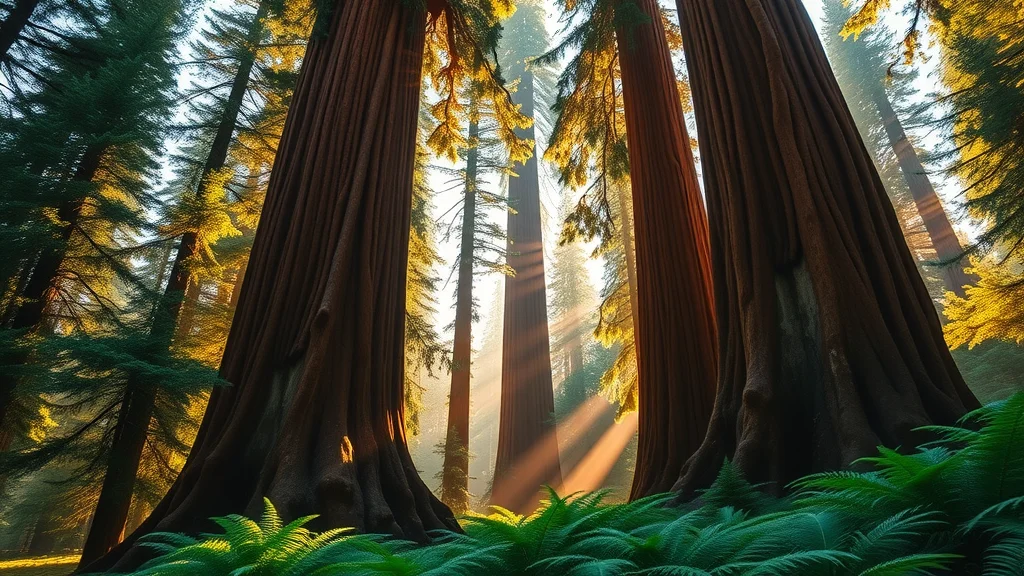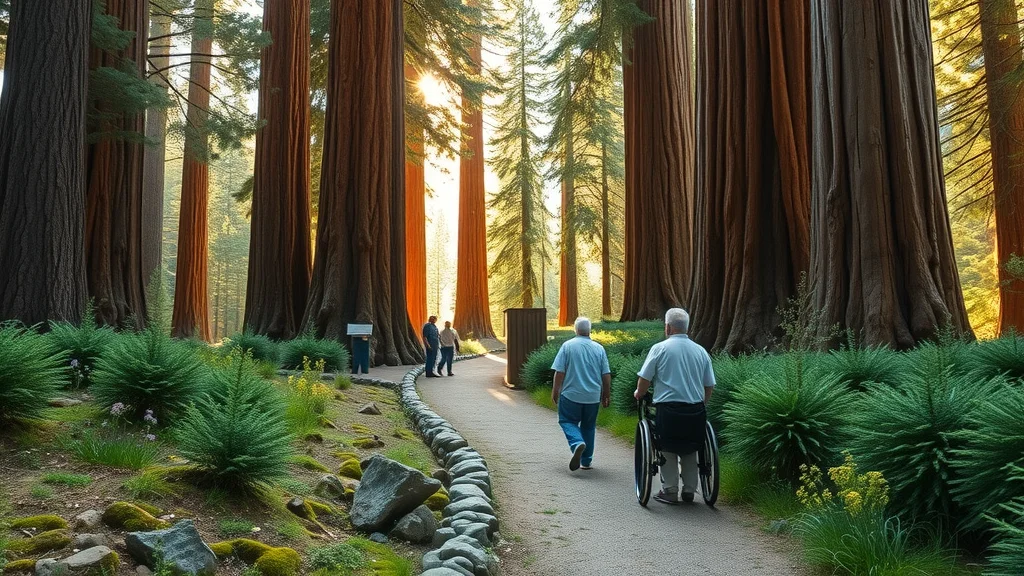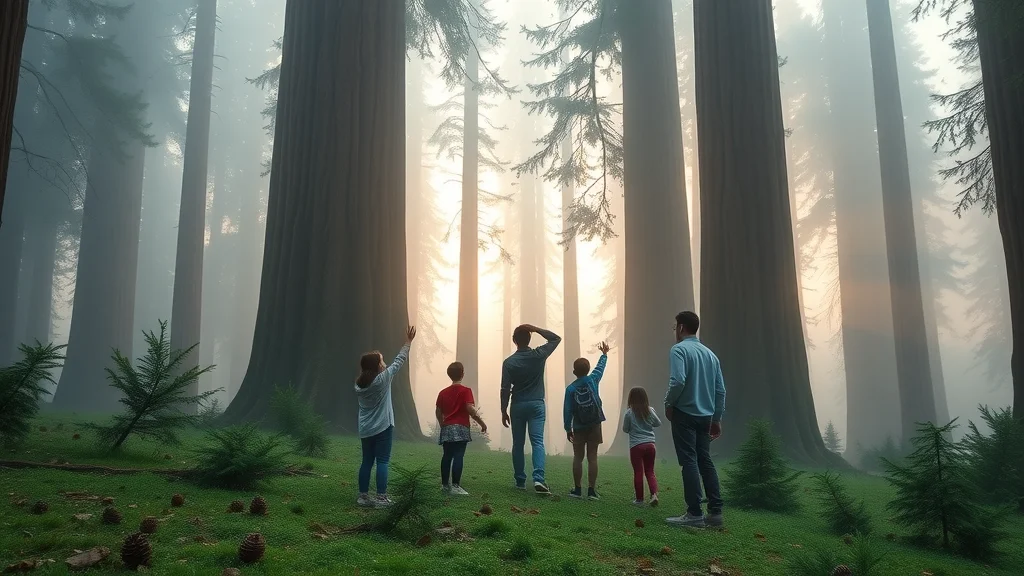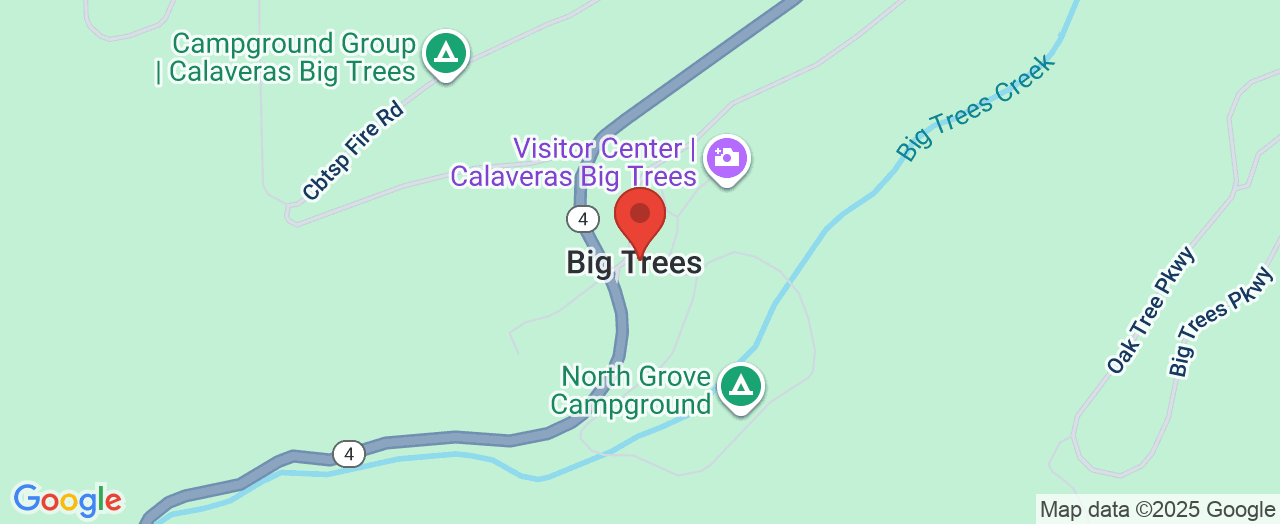Why the World Still Marvels at Giant Sequoia Groves: Nature’s Unsung Monument
Imagine stepping into a silent cathedral built not of stone, but of living wood—pillars stretching hundreds of feet skyward, their crowns hidden high above in filtered sunlight. Giant sequoia groves offer this rare, almost otherworldly experience, drawing travelers, scientists, and families for generations. But, beyond their enchanting appearance, giant sequoias house a dynamic story—one of survival, natural history, and the delicate balance between preservation and human wonder. Few places on earth captivate curiosity and reverence quite like these ancient communities of living giants, yet so many of their secrets remain unknown to the average visitor.
Understanding giant sequoia groves is more than appreciating their size or age. These places represent a living testament to resilience and interconnectedness, quietly thriving for millennia across the rugged Sierra Nevada. As modern challenges like wildfire, climate change, and urbanization threaten natural landscapes, the preservation and public access to these groves have never been more crucial—or relevant. Learning about giant sequoia groves today means not only appreciating natural marvels but also recognizing the efforts made to safeguard them, and why people of all backgrounds are invited to engage, explore, and be inspired by their presence. The value of these extraordinary forests stretches far beyond a scenic walk or striking photograph—it’s rooted in the ways these groves enrich our collective sense of health, inspiration, and education, now and for generations to come.

Unraveling the Story of Giant Sequoia Groves: More Than Just Tall Trees
Giant sequoia groves are not merely clusters of big trees—they are ancient biomes, some dating back thousands of years, that support diverse ecosystems and connect us to the deep past. A single grove is home to more than just towering sequoias. Within their shade, you’ll find a multitude of plant species, rich soil communities, and a dynamic interplay with wildlife, all shaped by age-old cycles of fire and regrowth. The sheer size and age of these sequoias—some standing over 250 feet tall and with trunks up to 25 feet in diameter—have long fascinated scientists and visitors alike, but what truly sets these groves apart is their unique ability to thrive together as a community.
For those unfamiliar, missing out on the importance of giant sequoia groves goes beyond skipping a tourist destination; it means missing a chance to witness nature’s version of living history. Without understanding the role of groves in preserving biodiversity, maintaining healthy forest ecosystems, and offering irreplaceable educational experiences, many may overlook the urgent challenges facing these giants today. Fires, droughts, and a changing climate threaten these trees in unprecedented ways, putting the stability of entire groves—and the experiences they provide—at risk. Appreciating giant sequoia groves is not just about size or spectacle, but about recognizing these forests as vital guardians of natural and cultural heritage.

Why Exploring Giant Sequoia Groves Offers Life-Changing Value
Visiting and understanding giant sequoia groves brings tangible benefits that extend far beyond the boundaries of any one park. Calaveras Big Trees State Park, for example, demonstrates a commitment to inclusive access, making it possible for people of all abilities to enjoy the wonders of these legendary trees. Trails are designed for both accessibility and adventure, offering something for every visitor—whether their goal is a peaceful stroll among giants or a challenging hike into deeper forest. The presence of informative guides, visitor centers, and interpretive events transforms a single excursion into an enriching educational journey, helping guests see groves not just as scenery, but as living classrooms.
The experience of walking among living sequoias offers powerful emotional and physiological benefits as well. Studies increasingly show that time spent in ancient forests can reduce stress, promote inspiration, and spark curiosity, especially for younger visitors forming lifelong connections with nature. By providing safe, welcoming settings for outdoor recreation and reflection, giant sequoia groves foster regenerative experiences for individuals and communities alike. And in a state as diverse as California, parks like Calaveras Big Trees support a mission of expanding relevance and access—ensuring everyone has the opportunity to be awed, educated, and uplifted by these unique natural treasures.

From Ancient History to Modern Marvel: The Enduring Legacy of Sequoia Groves
Long before the establishment of state parks or modern conservation, giant sequoia groves dotted the Sierra Nevada as silent witnesses to evolving climates and civilizations. Their resilience in the face of wildfire and shifting weather patterns speaks not only to their biological adaptations, but to the generations of people who have advocated for their protection. Today, the legacy of stewardship lives on—not just in physical preservation, but in the ongoing cultural and historical storytelling that state parks strive to share. Events celebrating California’s 175th anniversary and interpretive programs highlight sequoias’ integral role in state identity and natural history.
Yet this legacy isn’t static; it adapts with new insights and changing needs. Ongoing research into the fire cycles and growth patterns of sequoias equips land managers and visitors with a deeper understanding of what it takes to safeguard these trees. By tying together old wisdom and modern approaches, parks help visitors see themselves as stewards, capable of making a personal contribution to the preservation of these giants for future generations.
Giant Sequoia Groves and the Call to Climate-Responsive Preservation
In an era marked by drought, wildfire, and the accelerating effects of climate change, protecting giant sequoia groves has become a core part of planning for a sustainable future. Agencies like California State Parks implement resilient management solutions designed to adapt and sustain these ancient forests despite environmental pressures. By leveraging research and innovation, as well as community engagement, parks help visitors understand the urgent need for responsible stewardship. Efforts include maintaining healthy forest structures, supporting biodiversity, and investing in public education to build a culture of preservation.

The challenges faced by sequoia groves—such as intense wildfires and shifting precipitation patterns—are not isolated. They reflect broader issues facing wild places worldwide. For guests, learning about these challenges within a grove instills not only a sense of awe, but a responsibility to support and advocate for environmental solutions. The story of giant sequoia groves thus becomes a call to action, where every visit, photo contest submission, or family walk is part of a broader legacy of caring for the planet.
Bringing Statewide Inspiration to Every Visit: Education, Access, and Inclusion
One of the defining philosophies guiding California State Parks—and reflected in spaces like Calaveras Big Trees State Park—is the belief that preservation goes hand in hand with broad public access. By intentionally designing outdoor recreation offerings to suit all ages, backgrounds, and abilities, these parks ensure everyone can experience the health and inspiration that giant sequoia groves provide. Whether through accessible paths, interpretive signage, or engaging festivals, the approach is to celebrate both the biological diversity and the cultural heritage of the land.
Central to this mission is the idea that every visitor becomes part of the living story of the sequoias—helping to educate others, sharing in community events, and supporting ongoing protection. The commitment to increasing access and relevance underpins innovative solutions like mobile apps and virtual experiences, bridging gaps for those who cannot visit in person and expanding the reach of educational programming. In these ways, giant sequoia groves are not distant wonders, but living, breathing environments that welcome all and inspire future generations to cherish the natural world.
What Real People Say: Finding Wonder Among the Giants
Visiting a giant sequoia grove often leaves visitors not just impressed, but transformed. Firsthand accounts are powerful reminders of why preserving these places matters—and how accessible, well-designed parks can create enriching experiences for all kinds of guests. As more people share their stories, the mosaic of public connection to these groves grows even richer.
Beautiful park - fantastic, informative trail through the Sequoia grove. Easy trail supports wheel chairs. Lots of other trails as well, some more challenging. Something for everyone. Nice visitor center with a museum. Park staff - rangers and docents, extremely helpful and friendly. Great location - easier to get to than Sequoia National Park if you want to see the majestic trees.
Stories like these underscore the value of accessible trails, welcoming staff, and a range of experiences for visitors—all ingredients for an inspiring encounter with the world’s most impressive trees. For those yet to experience the magic of a sequoia grove, these real-world accounts offer a glimpse of the awe, learning, and fulfillment that await. Every visit becomes an opportunity to build cherished memories and become part of a collective movement to protect these giants for generations to come.
Giant Sequoia Groves: Preserving Natural Inspiration for Generations to Come
The significance of giant sequoia groves goes far beyond their towering height or ancient roots. They represent ongoing stories of resilience, adaptation, and human connection to nature. Thanks to the work of California State Parks and the mission of locations like Calaveras Big Trees State Park, these groves are cared for with an unwavering commitment to education, access, and preservation. For anyone seeking renewal, inspiration, or a deeper understanding of natural wonders, a visit to or engagement with giant sequoia groves is a step toward personal and communal enrichment. As visitors continue to explore and learn, the guardians of these magnificent forests ensure that their magic remains accessible now and for the future.
As the challenges facing wild landscapes evolve, so too does the commitment to stewardship and public engagement. Giant sequoia groves, with their unmatched beauty and cultural significance, will continue to serve as symbols of hope and timeliness for all who seek inspiration in the outdoors.
Contact the Experts at Calaveras Big Trees State Park
If you’d like to learn more about how giant sequoia groves could benefit your outdoor adventure or education, contact the team at Calaveras Big Trees State Park.
📍 Address: 1170 CA-4, Arnold, CA 95223, USA
📞 Phone: +1 209-795-2334
🌐 Website: https://www.parks.ca.gov/
Calaveras Big Trees State Park Location and Hours
🕒 Hours of Operation:
📅 Monday: 6:00 AM – 10:00 PM
📅 Tuesday: 6:00 AM – 10:00 PM
📅 Wednesday: 6:00 AM – 10:00 PM
📅 Thursday: 6:00 AM – 10:00 PM
📅 Friday: 6:00 AM – 10:00 PM
📅 Saturday: 6:00 AM – 10:00 PM
📅 Sunday: 6:00 AM – 10:00 PM

 Add Row
Add Row  Add
Add 





Write A Comment